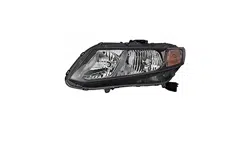
Contents
Safe Driving
P. 4
Instrument Panel
P. 6
Driving
P. 10
Maintenance
P. 16
Handling the Unexpected
P. 21
Information
P. 38
Safe Driving P. 4
Safety Labels P. 4
Instrument Panel P. 6
Indicators P. 6 Gauges and Displays P. 9
Driving P. 10
Before Driving P. 10 When Driving P. 11 Refueling P. 13
Maintenance P. 16
Maintaining the Fuel System P. 16 Maintenance Minder
TM
P. 17 Replacing Light Bulbs P. 19
Handling the Unexpected P. 21
Tools P. 21 If a Tire Goes Flat P. 22 Fuel Leaks P. 33
Indicator, Coming On/Blinking P. 34 Fuses P. 35
Information P. 38
Specifications P. 38 Fuel System P. 40 Authorized Manuals P. 41
Online
Reference Owner's Manual Supplement
2013 Civic CNG
This owner’s manual should be considered a permanent part of
the vehicle and should remain with the vehicle when it is sold.
This owner’s manual is for vehicles sold in the United States.
The information and specifications included in this publication
were in effect at the time of approval for printing. Honda Motor
Co., Ltd. reserves the right, however, to discontinue or change
specifications or design at any time without notice and without
incurring any obligation.
Home
Book Table of Contents
Navigation Key
SEC
Section First Page
Loading ...
Loading ...
Loading ...
